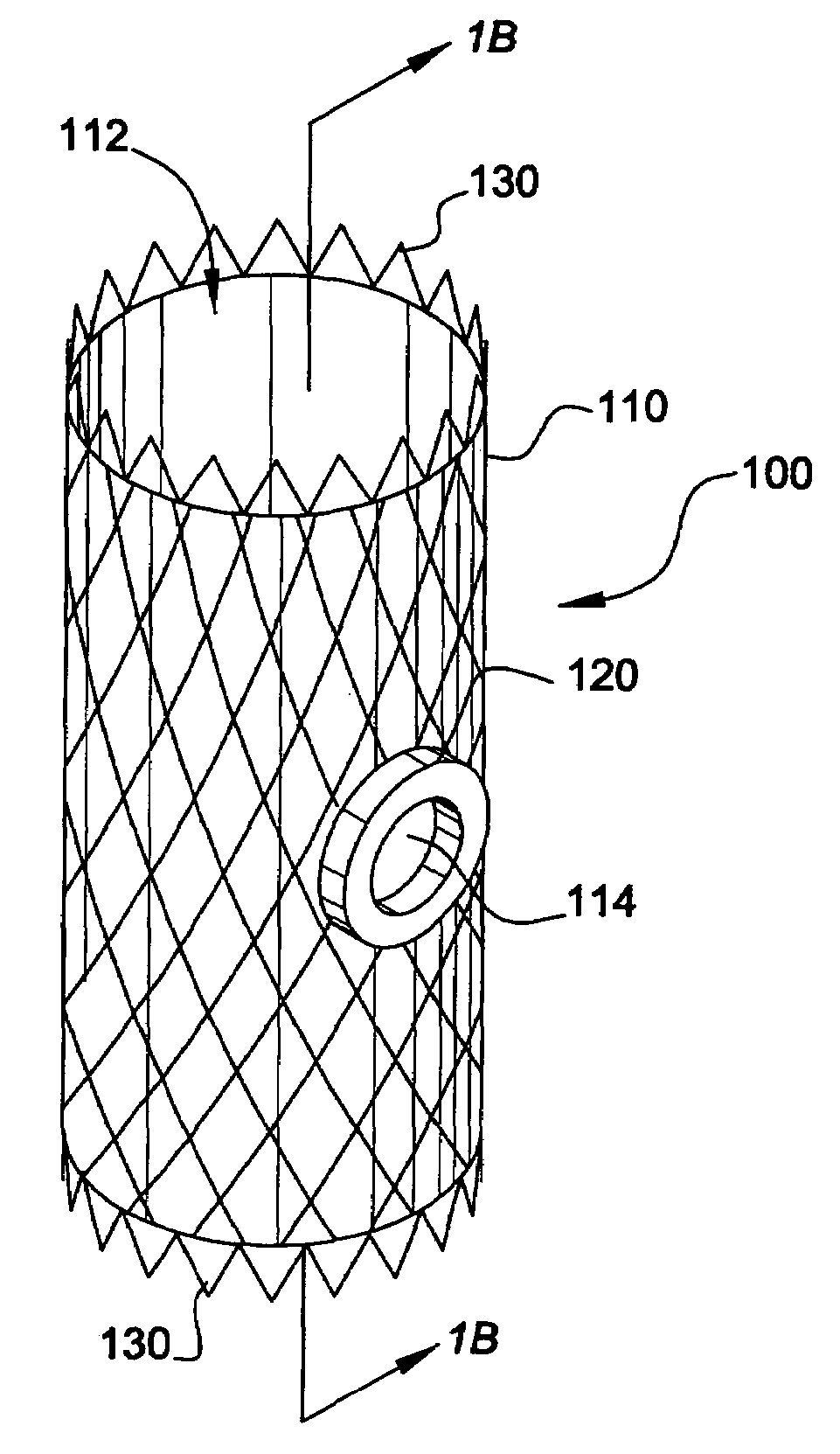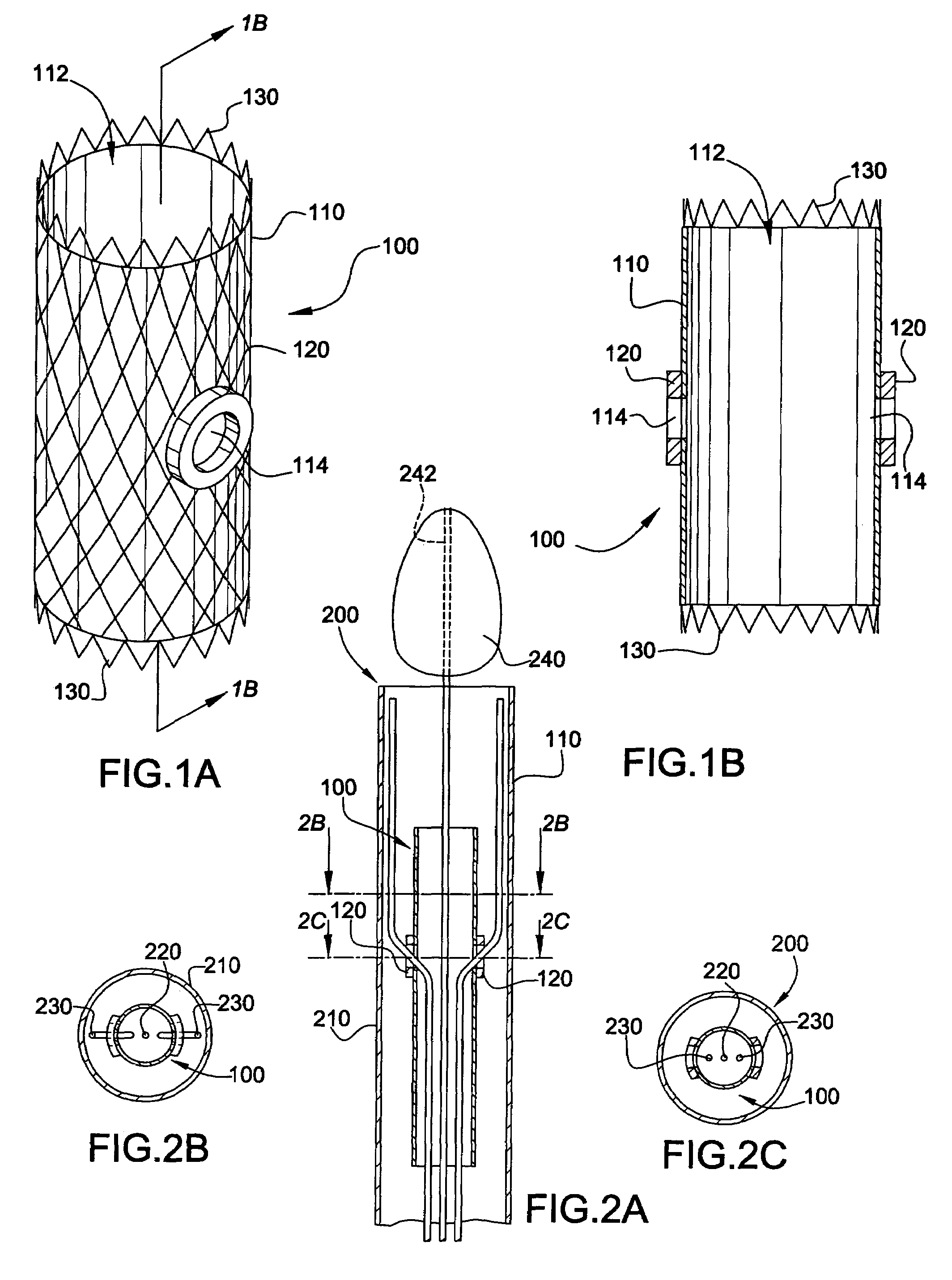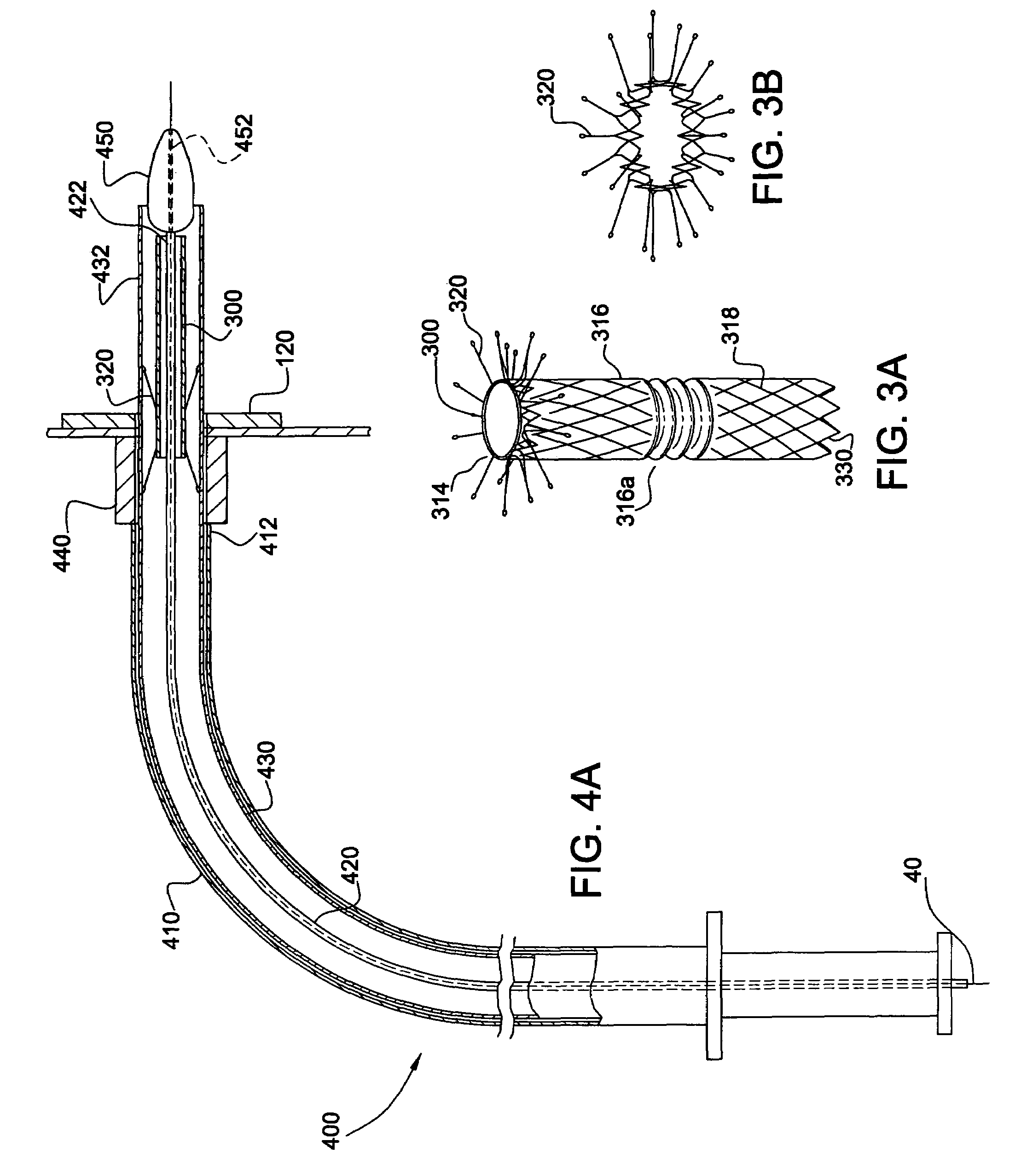System and method for endoluminal grafting of bifurcated and branched vessels
a technology of bifurcated and branched vessels and endoluminal grafting, which is applied in the field of medical devices and methods, can solve the problems of poor risk of traditional surgery, significant risk of death to the patient, and traditional surgery in itself incurs significant risk of morbidity and mortality to the patient, and achieves the effect of expanding the benefit of endoluminal grafting
- Summary
- Abstract
- Description
- Claims
- Application Information
AI Technical Summary
Benefits of technology
Problems solved by technology
Method used
Image
Examples
first embodiment
[0066]In accordance with the present invention, the endoluminal grafting system 50 comprises an endoaortic graft 100 (also referred to herein as an “endoaortic cuff”) (FIGS. 1A-1B), an endoaortic graft delivery system 200 for introducing the endoaortic graft 100 into a native, main anatomic conduit 10 (FIGS. 2A-2C), a branch graft 300 (FIG. 3), and a branch graft delivery system 400 for housing the branch graft 300 and introducing it into a branch anatomic conduit 20 extending from the main anatomic conduit 10 (FIGS. 4A-4B).
[0067]As shown in FIGS. 1A-1B, the endoaortic graft 100 comprises a first pliable tube (i.e., a tube formed of a pliable material) having a lumen 112 extending longitudinally therethrough; at least one branch opening 114 (e.g., an aperture) formed in the first pliable tube 110; a flexible magnetic ring 120 incorporated around the at least one branch opening 114 of the first pliable tube 110; and an endoaortic graft anchoring device 130 for holding the first pliab...
second embodiment
[0083]In accordance with the present invention, the endoluminal grafting system 50′ comprises an endoaortic graft 100′ (FIGS. 5A-5D), an endoaortic graft delivery system 200 for introducing the endoaortic graft 100′ into a native, main anatomic conduit 10 (FIGS. 2A-2C), a branch graft 300′ (FIGS. 7A-7B), and a branch graft delivery system 400 for housing the branch graft 300′ and introducing it into a branch anatomic conduit 20 extending from the main anatomic conduit 10 (FIGS. 4A-4B).
[0084]As shown in FIGS. 5A-5D, the endoaortic graft 100′ comprises a first pliable tube 110 (i.e., a tube formed of a pliable material) having a lumen 112 extending longitudinally therethrough; at least one branch opening 114 (e.g., an aperture) formed in the first pliable tube 110; a flexible magnetic ring 120 incorporated around the at least one branch opening 114 of the first pliable tube; a coupling mechanism 150 for coupling the branch graft 300′ to the flexible magnetic ring 120; and an endoaorti...
third embodiment
[0094]In the invention, the means 460 for maintaining the branch graft 300 in a contracted position includes a deployment wire 462 radially positioned between the inner and middle sheaths 420 and 430, and a thread 464 wrapped around both the contracted branch graft 300 and the deployment wire 462. The thread 464 is made of a biodegradable, absorbable material (for example, PTF or synthetic, absorbable suture sold under the trademarks Vicryl® and Monocryl®). One end 464a of the thread 464 is left as a tail extending at least the length of the outer sheath 412 and the other end (not shown) is secured on itself, for example by a half-knot, to prevent the wrapping from unraveling. The thread 464 is wrapped about the deployment wire 462 and the branch graft 300 in a figure-eight configuration, so that when the deployment wire 462 is retracted, the wrapping unravels, allowing the branch graft 300 to assume an expanded condition.
[0095]The third embodiment of the invention, in which the bra...
PUM
 Login to View More
Login to View More Abstract
Description
Claims
Application Information
 Login to View More
Login to View More - R&D
- Intellectual Property
- Life Sciences
- Materials
- Tech Scout
- Unparalleled Data Quality
- Higher Quality Content
- 60% Fewer Hallucinations
Browse by: Latest US Patents, China's latest patents, Technical Efficacy Thesaurus, Application Domain, Technology Topic, Popular Technical Reports.
© 2025 PatSnap. All rights reserved.Legal|Privacy policy|Modern Slavery Act Transparency Statement|Sitemap|About US| Contact US: help@patsnap.com



